
Magnetic Nanoparticles Leap from Lab Bench to Breast Cancer Clinical Trials
August 02, 2018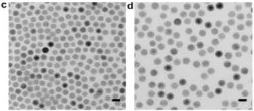
Sandia National Laboratories materials chemist Dale Huber has been working on the challenge of making iron-based nanoparticles the exact same size for 15 years. Now, he and his long-term collaborators at lmagion Biosystems will use these magnetic nanoparticles for their first breast cancer clinical trial later this year. The nanoparticles stick to breast cancer cells, allowing the detection and removal of even small metastases.
lmagion Biosystems and Huber have been working together synthesizing nanoparticles since the opening of the Center for Integrated Nanotechnologies in 2006. "Having access to the talent pool at CINT with experts like Dale Huber has been helpful," said Bob Proulx, CEO of I mag ion Biosystems. "Additionally, the fact that CINT has a user program that allows industry to access the facilities and equipment that, otherwise, would be too expensive for a small company like ours was valuable. The initial work we did with CINT to develop a method to give precise control over the size of the nanoparticle was key for our Mag Sense magnetic relaxometry technology for the detection of cancer."
To read the whole story, click here.
Microprinting Is Cool - Magnetic Items Also Supported
August 01, 2018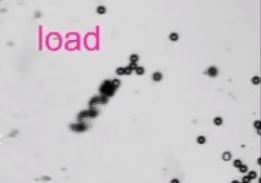
Please check out the movie at this link: https://youtu.be/sJP4rL57Dq8.
And more information about the high precision 3D printing is available on this website: https://www.nanoscribe.de/en/.
Magnet's Tune a Surface's Friction
July 30, 2018![]() Harvard University’s Joanna Aizenberg and coworkers created the surfaces by infusing a ferrofluid—a suspension of magnetic particles in a variety of liquids—into a microstructured, porous epoxy surface. The team previously had made slippery liquid-infused porous surfaces, or SLIPS, by adding lubricants to similar porous solids. What’s different about these new surfaces—called ferrofluid-containing liquid-infused porous surfaces (FLIPS)—is that they allow researchers to control the distribution of the fluid within the structure with a magnetic field.
Harvard University’s Joanna Aizenberg and coworkers created the surfaces by infusing a ferrofluid—a suspension of magnetic particles in a variety of liquids—into a microstructured, porous epoxy surface. The team previously had made slippery liquid-infused porous surfaces, or SLIPS, by adding lubricants to similar porous solids. What’s different about these new surfaces—called ferrofluid-containing liquid-infused porous surfaces (FLIPS)—is that they allow researchers to control the distribution of the fluid within the structure with a magnetic field.
A FLIPS surface is flat and slippery until researchers place a magnet nearby. The magnetic field pulls the ferrofluid and makes it form a variety of different configurations, depending on the underlying pattern on the microstructured surface and other factors.
As a result, the magnetic field depletes the ferrofluid in one area of the surface, exposing the roughness of the epoxy solid underneath and effectively “turning on” the surface’s friction. The team used this tunable friction to temporarily pin a water droplet in place; when the researchers released the magnetic field, the droplet slid away.
The team demonstrated several other functions for the FLIPS, ranging from those on a very small scale to some on a larger scale. For example, they transported nonmagnetic colloidal particles, pumped a dyed ethanol solution, and removed a biofilm of green algae that had accumulated on a FLIPS surface.
The study transforms a simple concept into “a versatile technique for manipulating various objects and phenomena,” says Liming Dai of Case Western Reserve University, who designs materials with functional structures and smart features.
Aizenberg says her team continues to work to better understand the underlying physical phenomena of how these fluids interact with microscructures and develop dynamic materials for various applications. In particular, the group is interested in exploring whether FLIPS surfaces could enable self-cleaning pipes that prevent the buildup of algae.
Nanocrystals Give Hematite Rainbow Colors
July 30, 2018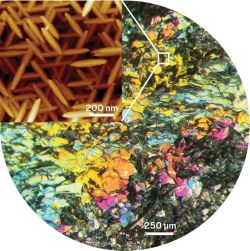 Naturally iridescent materials such as opal or a butterfly’s wing have long fascinated onlookers for their ability to produce spectacular rainbow colors. Now, researchers have uncovered the cause of the vibrant display in another naturally iridescent material, the iron oxide mineral known as rainbow hematite. Pennsylvania State University geochemist Peter J. Heaney and his student Xiayang Lin used a variety of imaging and spectroscopy techniques to investigate the chemical makeup and surface structure of a rainbow hematite sample from Brazil (Gems & Gemol. 2018, DOI: 10.5741/GEMS.54.1.28). They found that the mineral contains stacked sheets of spindle-shaped nanocrystals that are arranged at 120-degree angles.
Naturally iridescent materials such as opal or a butterfly’s wing have long fascinated onlookers for their ability to produce spectacular rainbow colors. Now, researchers have uncovered the cause of the vibrant display in another naturally iridescent material, the iron oxide mineral known as rainbow hematite. Pennsylvania State University geochemist Peter J. Heaney and his student Xiayang Lin used a variety of imaging and spectroscopy techniques to investigate the chemical makeup and surface structure of a rainbow hematite sample from Brazil (Gems & Gemol. 2018, DOI: 10.5741/GEMS.54.1.28). They found that the mineral contains stacked sheets of spindle-shaped nanocrystals that are arranged at 120-degree angles.
The nanocrystal array acts as a diffraction grating, splitting and scattering beams of light to produce the rainbow effect. The researchers also calculated a chemical formula (Fe1.81Al0.23P0.03O3) for the mineral, which contains aluminum and phosphorus impurities in addition to its major iron and oxygen components. The presence of those impurities within the crystal structure may have prompted the nanoparticles to grow into spindle shapes rather than into more symmetrical rhombohedrons, Heaney says. He thinks the findings could inspire new nanocrystal-based iridescent coatings.
Scientists Discover New Magnetic Element
June 10, 2018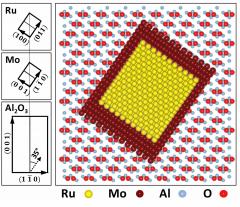 A new experimental discovery, led by researchers at the University of Minnesota, demonstrates that the chemical element ruthenium (Ru) is the fourth single element to have unique magnetic properties at room temperature. The discovery could be used to improve sensors, devices in the computer memory and logic industry, or other devices using magnetic materials.
A new experimental discovery, led by researchers at the University of Minnesota, demonstrates that the chemical element ruthenium (Ru) is the fourth single element to have unique magnetic properties at room temperature. The discovery could be used to improve sensors, devices in the computer memory and logic industry, or other devices using magnetic materials.
The use of ferromagnetism, or the basic mechanism by which certain materials (such as iron) form permanent magnets or are attracted to magnets, reaches back as far as ancient times when lodestone was used for navigation. Since then only three elements on the periodic table have been found to be ferromagnetic at room temperature—iron (Fe), cobalt (Co), and nickel (Ni). The rare earth element gadolinium (Gd) nearly misses by only 8 degrees Celsius.
Magnetic materials are very important in industry and modern technology and have been used for fundamental studies and in many everyday applications such as sensors, electric motors, generators, hard disk media, and most recently spintronic memories.
As thin film growth has improved over the past few decades, so has the ability to control the structure of crystal lattices—or even force structures that are impossible in nature. This new study demonstrates that Ru can be the fourth single element ferromagnetic material by using ultra-thin films to force the ferromagnetic phase.
The details of their work are published in the most recent issue of Nature Communications. The lead author of the paper is a recent University of Minnesota Ph.D. graduate Patrick Quarterman, who is a National Research Council (NRC) postdoctoral fellow at the National Institute of Standards and Technology (NIST).
“Magnetism is always amazing. It proves itself again. We are excited and grateful to be the first group to experimentally demonstrate and add the fourth ferromagnetic element at room temperature to the periodic table,” said University of Minnesota Robert F. Hartmann professor of electrical and computer engineering Jian-Ping Wang, the corresponding author for the paper and Quarterman’s advisor.
“This is an exciting but hard problem. It took us about two years to find a right way to grow this material and validate it. This work will trigger the magnetic research community to look into fundamental aspects of magnetism for many well-known elements,” Wang added.
Helium Ion Microscopy Reveals Mysteries of Iron-Oxide Covered Bacteria
June 07, 2018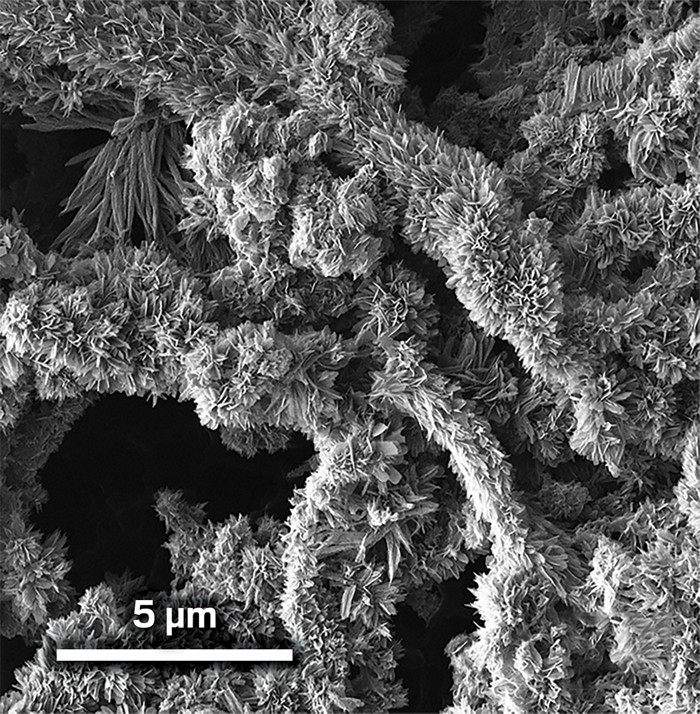 Some iron-oxidizing bacteria make organic-mineral filaments that extend from their surfaces. But how they are formed remains a puzzle. Now, using helium ion microscopy (HIM), James M. Byrne of the University of Tübingen and his colleagues have captured these stalks forming in unprecedented detail (Environ. Sci. Technol. Lett. 2018, DOI: 10.1021/acs.estlett.8b00077). Previous imaging efforts used scanning electron microscopy, but this technique has inferior resolution and in this context requires coatings that distort the structures being studied.
Some iron-oxidizing bacteria make organic-mineral filaments that extend from their surfaces. But how they are formed remains a puzzle. Now, using helium ion microscopy (HIM), James M. Byrne of the University of Tübingen and his colleagues have captured these stalks forming in unprecedented detail (Environ. Sci. Technol. Lett. 2018, DOI: 10.1021/acs.estlett.8b00077). Previous imaging efforts used scanning electron microscopy, but this technique has inferior resolution and in this context requires coatings that distort the structures being studied.
The group cultured bacteria isolated from low-oxygen sediments in a Denmark bay and analyzed the samples with HIM over a month to document how the structures changed. First, spiral-shaped stalks formed. Eventually, mineral crystals coated the spirals so heavily that their shapes were no longer discernible. “It really blew my mind when we started to see these objects forming,” Byrne says. The spirals were mostly organic, whereas the mineral deposits were lepidocrocite, an iron oxide-hydroxide mineral, elemental analysis showed. Some researchers think the structures sequester toxic, dissolved iron(II) in the environment as insoluble iron(III), protecting the microbes. More work may solve that mystery, too.
Magnetic Quiz - We Have Two Winners
May 27, 2018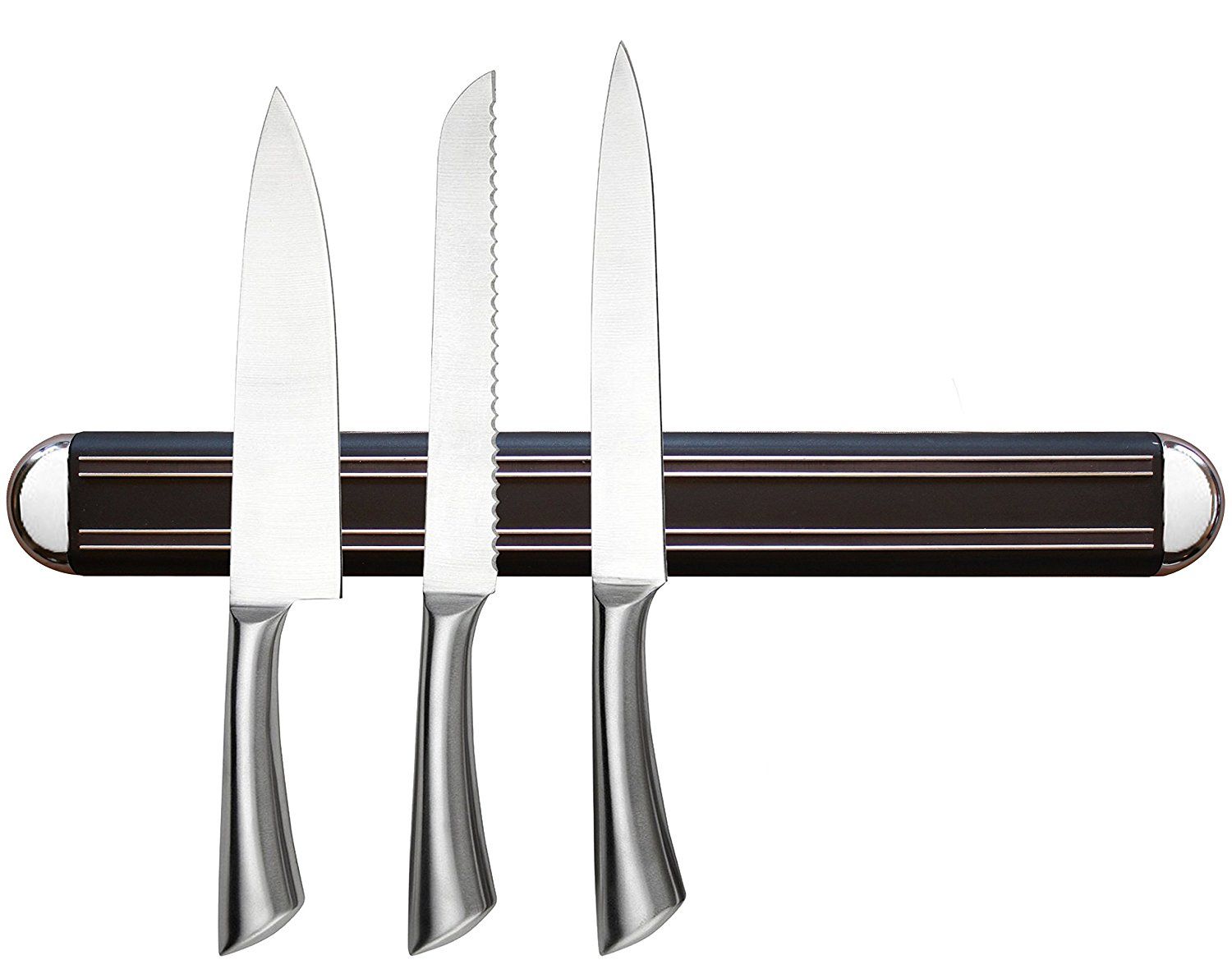 In preparation of our 2018 Magnetic Carrier Meeting, Vitalii Zablotskii made up a small quiz about magnetism. It was not easy, and nobody could answer all the questions correctly. But we had two conference participants who got the same high score. As a thank you, they received a magnetic knife holder - something really useful for your kitchen.
In preparation of our 2018 Magnetic Carrier Meeting, Vitalii Zablotskii made up a small quiz about magnetism. It was not easy, and nobody could answer all the questions correctly. But we had two conference participants who got the same high score. As a thank you, they received a magnetic knife holder - something really useful for your kitchen.
If you have not answered the quiz questions yet, you might give it a try with the the questions here. And if you think you got it all right, check to see Vitalii's answers here. Did you get it all correctly?
Thank you very much Vitalii for preparing this for us! And by the way, there will be another quiz coming up in the near future. Keep posted.
Big Honor for Maxim Nikitin
May 27, 2018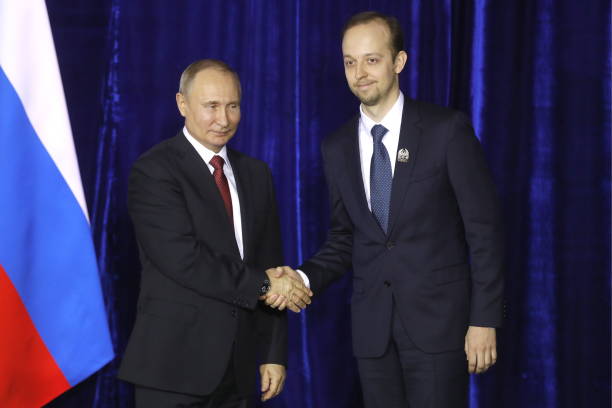 Russia's President Vladimir Putin presented our own physicist/mathematician Maxim Nikitin of Moscow Institute of Physics and Technology (MFTI) on February 8, 2018 with an award to young researchers and scientists at the House of Scientists (Scientists' Club) of the Siberian Branch of the Russian Academy of Sciences. Well deserved Maxim!
Russia's President Vladimir Putin presented our own physicist/mathematician Maxim Nikitin of Moscow Institute of Physics and Technology (MFTI) on February 8, 2018 with an award to young researchers and scientists at the House of Scientists (Scientists' Club) of the Siberian Branch of the Russian Academy of Sciences. Well deserved Maxim!
For more information, check out our Archives.
September 2017
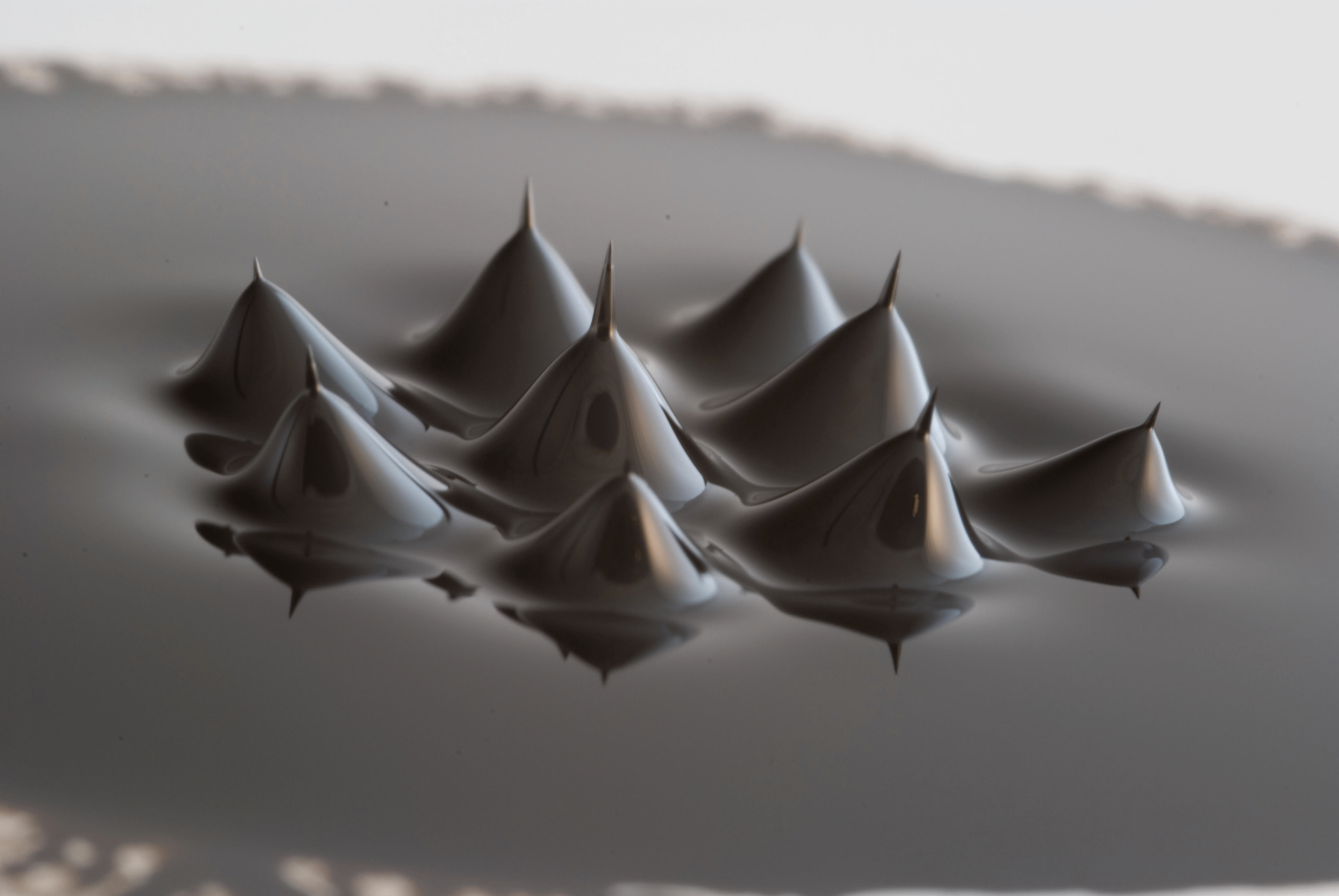
Search this site with the power of
